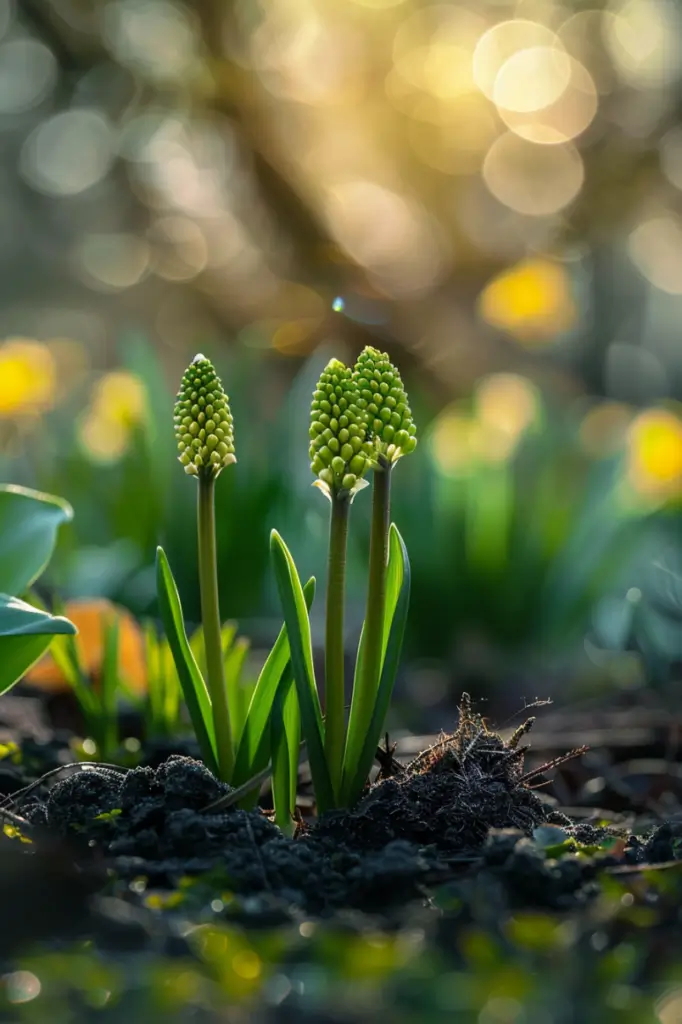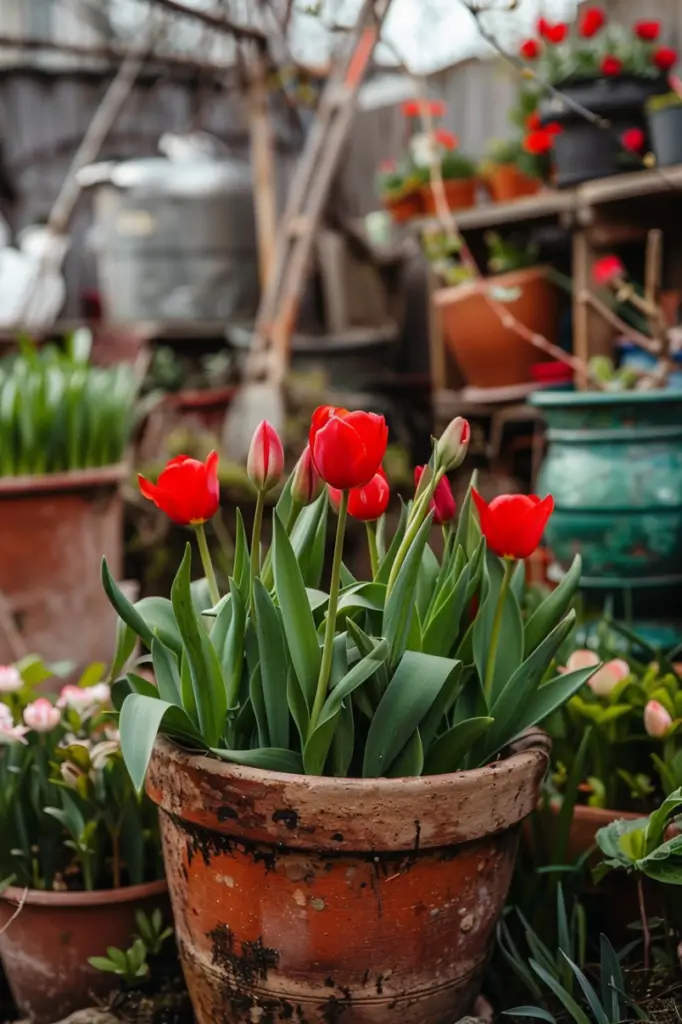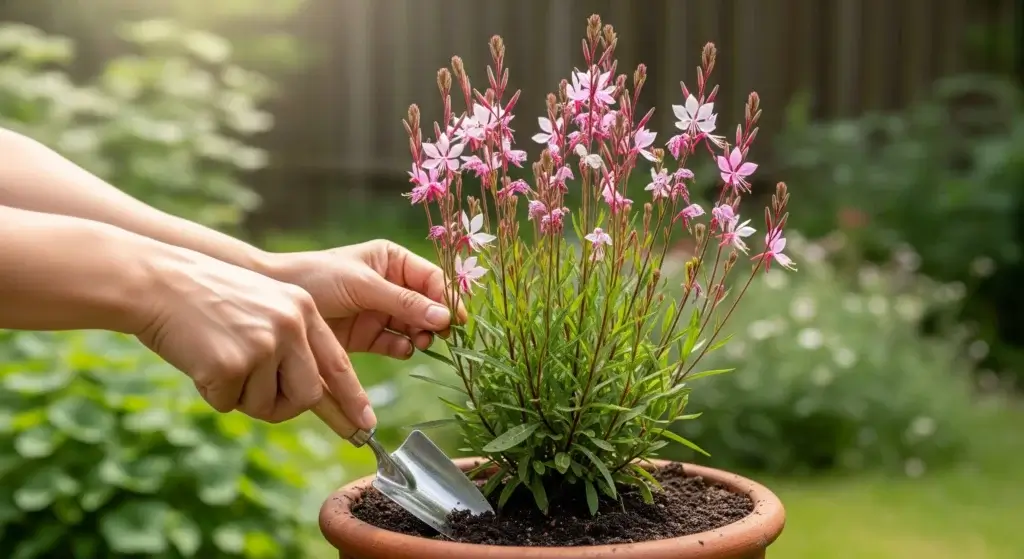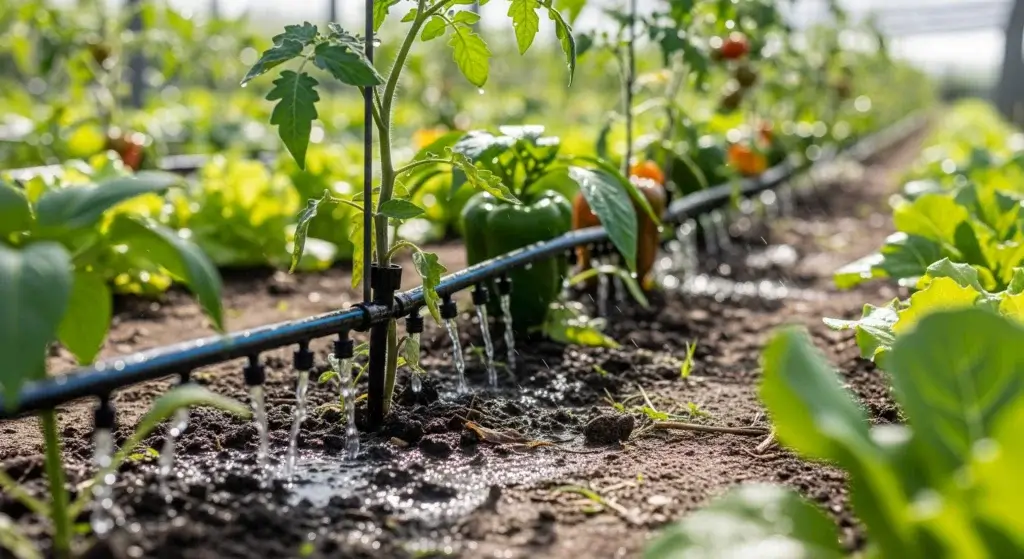
As the chill of winter fades and the warmth of spring sets in, your garden begins to awaken.
Spring is a crucial time for plant care, and giving your plants the attention they need now will set them up for a successful growing season.
In this guide, we’ll explore essential spring plant care tips to help your garden thrive.
Watering Adjustments
Spring brings longer days and warmer temperatures, signaling a change in how you care for your plants.
Here’s how to adjust your watering routine to ensure your plants thrive:
- Read also: Unlock Lush Growth: Tips for Caring for Succulents Indoor
- Read also: Unlocking the Secrets: Essential Tips for Caring for Bonsai Trees
Consistency is key
- Regular watering: As temperatures rise, plants use more water to support growth. Water your plants consistently to keep the soil moist but not waterlogged.
- Observation: Pay attention to your plants’ needs. Different plants have different watering requirements, so observe how quickly the soil dries out after watering.
Morning watering routine
- Benefits of morning watering: Water your plants in the morning. This allows moisture to reach the roots before the sun’s heat evaporates it.
- Efficiency: By watering early, you maximize water absorption by plants when they need it most. It also gives leaves time to dry off during the day.
Soil moisture monitoring
- Checking soil moisture: Regularly check the soil moisture level. Stick your finger into the soil up to the first inch. If it feels dry, it’s time to water.
- Proper timing: Avoid watering when the soil is still moist. This helps prevent waterlogging and ensures plants get the right amount of hydration.

Repotting and Upgrading
Spring is a perfect time to give your plants a fresh start by repotting and upgrading their containers.
Here’s how to do it effectively to ensure your plants thrive:
Choosing the right pot
- Size matters: Select a new pot that is slightly larger than the current one. This gives your plant room to grow without becoming root-bound.
- Drainage is key: Opt for a pot with drainage holes at the bottom. Proper drainage prevents water from pooling and causing root rot, which can harm your plant’s health.
Using fresh soil
- Nutrient-rich soil: Use high-quality potting soil that’s fresh and enriched with nutrients. Over time, the nutrients in old soil can deplete, affecting your plant’s growth.
- Filling the pot: Start by placing a layer of soil at the bottom of the new pot. Gently loosen the roots of your plant from the old pot to encourage outward growth.
Transitioning your plant
- Handle with care: When transferring your plant, handle it delicately to avoid damaging the roots. Loosen the roots gently to encourage them to spread into the new soil.
- Watering after repotting: After repotting, give your plant a thorough watering. This helps settle the soil around the roots and provides hydration.
Spring Cleaning and Pruning
Spring cleaning isn’t just for your home—it’s for your garden, too!
Cleaning and pruning your plants will promote healthier growth and improve their appearance.
Clearing debris
- Removing dead matter: Begin by clearing away any dead leaves, fallen branches, or other debris around your plants.
- Weed control: While cleaning, also take the opportunity to remove any weeds that have started to sprout. Weeds compete with your plants for nutrients and water.
Pruning for growth
- Identify dead or damaged branches: Inspect your plants for dead or damaged branches.
- Timing for flowering plants: For flowering plants, prune after they’ve finished blooming. This helps maintain their shape and removes spent flowers.
Tool sterilization
- Maintaining tool health: Before you start pruning, ensure your tools are clean and sharp. Use a disinfectant or rubbing alcohol to sterilize them.
- Proper storage: After use, clean your tools again and store them in a dry place. This prolongs their lifespan and ensures they’re ready for the next gardening session.

Fertilizing and Nutrient Boosts
As plants come out of dormancy, they need a nutrient boost to support their growth.
Choosing the right fertilizer
- Balanced nutrients: Opt for a balanced fertilizer that includes nitrogen (N), phosphorus (P), and potassium (K) in equal proportions.
- Understanding N-P-K: The numbers on fertilizer labels indicate the ratio of these nutrients. For example, a 10-10-10 fertilizer has equal parts of nitrogen, phosphorus, and potassium.
Types of fertilizers
- Slow-release benefits: Consider using slow-release fertilizers, which gradually release nutrients into the soil over time.
- Organic options: For those practicing organic gardening, compost and well-rotted manure are excellent choices.
Light Adjustments
Spring brings longer days and more sunlight, but it’s important to ensure your plants get the right amount of light.
Gradual adjustment
- Sunburn prevention: Indoor plants accustomed to lower light levels need time to adapt to increased sunlight.
- Outdoor transition: Outdoor plants, too, benefit from a gradual adjustment to spring sunlight. Start by placing them in areas with filtered light before exposing them to full sun.
Rotational care
Rotate your plants regularly, about once a week, to ensure they receive uniform light exposure.
This practice encourages balanced growth and prevents them from leaning towards the light source.
Rotating also helps all parts of the plant receive adequate light for photosynthesis.
Understanding light needs
- Plant varieties: Different plants have varying light requirements. Some thrive in full sun, soaking up direct sunlight for optimal growth and flowering.
- Observation: Observe how your plants respond to their current light conditions. Signs of inadequate light include pale leaves, stunted growth, or stretching towards the light source.

Pest and Weed Prevention
With the arrival of spring, pests and weeds can become more active.
Taking preventive measures now can save you a lot of trouble later.
Inspect regularly
Make it a habit to inspect your plants regularly for signs of pests such as aphids, mites, and caterpillars.
Look for chewed leaves, discolored spots, or webs.
Early detection allows you to intervene promptly before pests cause significant damage.
Natural predators
Invite natural predators like ladybugs, spiders, and lacewings into your garden.
These beneficial insects feed on pests, helping to naturally control their populations.
Planting flowers and herbs that attract these predators can create a balanced ecosystem in your garden.
Mulching
- Weed suppression: Apply a layer of mulch around your plants to inhibit weed growth. Mulch blocks sunlight from reaching weed seeds.
- Soil health: Organic mulches such as straw and wood chips decompose over time, enriching the soil with essential nutrients.
Non-toxic solutions
Opt for non-toxic pest control methods to protect your plants and the environment.
Products like neem oil or insecticidal soap effectively manage pests without harming beneficial insects, birds, or other wildlife.

- Read also: Tips for Thriving Foliage: A Guide to Indoor Umbrella Plant Care
- Read also: Comprehensive Guide: Mastering Dragon Wing Begonia Care
Conclusion
Spring plant care sets the stage for a lush, vibrant garden.
By adjusting your watering routine, repotting and upgrading plants, performing spring cleaning and pruning, boosting with fertilizer, adjusting light exposure, and preventing pests and weeds, you’ll give your plants the best start to the growing season.
Happy gardening!



